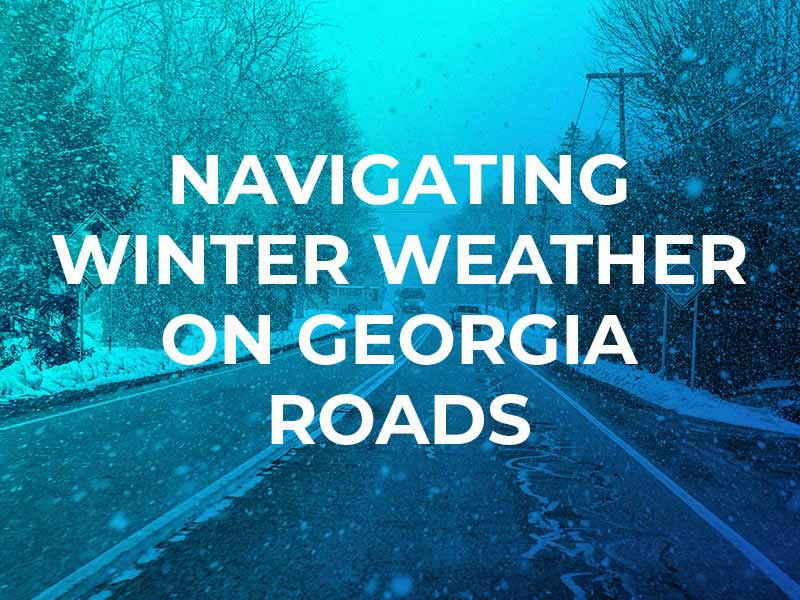Navigating Winter Weather on Georgia Roads
As the weather cools and the leaves turn, we need to begin to think about driving in wintery weather. Yes, even in Georgia, drivers should always be read to operate in snowy and icy conditions. Drivers in this state are generally unprepared for these situations. Perhaps even more than drivers in Northern states, drivers in Georgia should read and understand the following tips for navigating winter weather.

Driving in winter weather
The truth is that even small amounts of snow and ice can turn normally safe roads into hazardous tracts. According to the Federal Highway Administration, 24% of weather-related vehicle crashes occur on snowy, slushy, or icy pavement, and 15% happen during snowfall or sleep. Every year, more than 900 people are killed and around 76,000 are injured in crashes during wintery conditions. One of the most hazardous situations is the presence of black ice, or a thin layer of transparent ice that may simply look wet, but is really completely frozen over.
Some winter weather driving tips
When there is a threat of wintery weather, you should:
- Make sure your tires are properly inflated
- Always keep your gas tank at least half-full
- Take your vehicle to the shop for routine maintenance
You may want to put together a winter mobile survival kit. This can include:
- Portable cell phone charger
- An ice scraper
- Flashlights with spare batteries
- Jumper cables
- Sand, salt, or cat litter for traction on icy roads
- A first aid kit
- Food and bottled water
- Blankets
Many of the items in a winter weather survival kit are also useful all year long in the event you break down. It is always a good idea to be prepared for roadway breakdowns.
If you can avoid driving in wintery conditions, you should do so. In fact, many businesses and government offices shut down in Georgia at the threat of winter weather. Staying off the road is the surest way to remain safe. However, if you do need to drive in wintery conditions, there are some important tips to follow:
- Plan your route out ahead of time and avoid major roadways.
- Slow down to at least half of your normal driving speed and use a lower gear when you drive.
- Do not stop going if you are on a hill and get some inertia on a flat roadway before taking on the hill.
- Never use cruise control on wet or icy roadways.
- Avoid any abrupt steering maneuvers.
- Do not pass a dump truck spreading salt or gravel. The gravel can bounce up and break your windshield.
- If you come to a traffic light that is not working, treat it like a four-way stop.
- Understand that bridges and overpasses, as well as shady areas, remain icy long after regular roadway surfaces.
- Watch out for fallen power lines and trees.
- If you feel unsafe or that you cannot continue on at any point, pull over and stay put.
If you are stopped or stalled:
- Do not leave your car if you breakdown or stop. Call for help and let authorities know where you are. This gives you the best chance of being rescued quickly, and your vehicle is the best shelter for the time being.
Turn on the car only long enough to warm up the vehicle, and then turn it back off. Typically, it is safe to run the vehicle for about 10 minutes each hour. This helps conserve gas and battery power. When the engine is funning, leave the window slightly cracked in order to ventilate the exhaust and protect you from carbon monoxide poisoning.